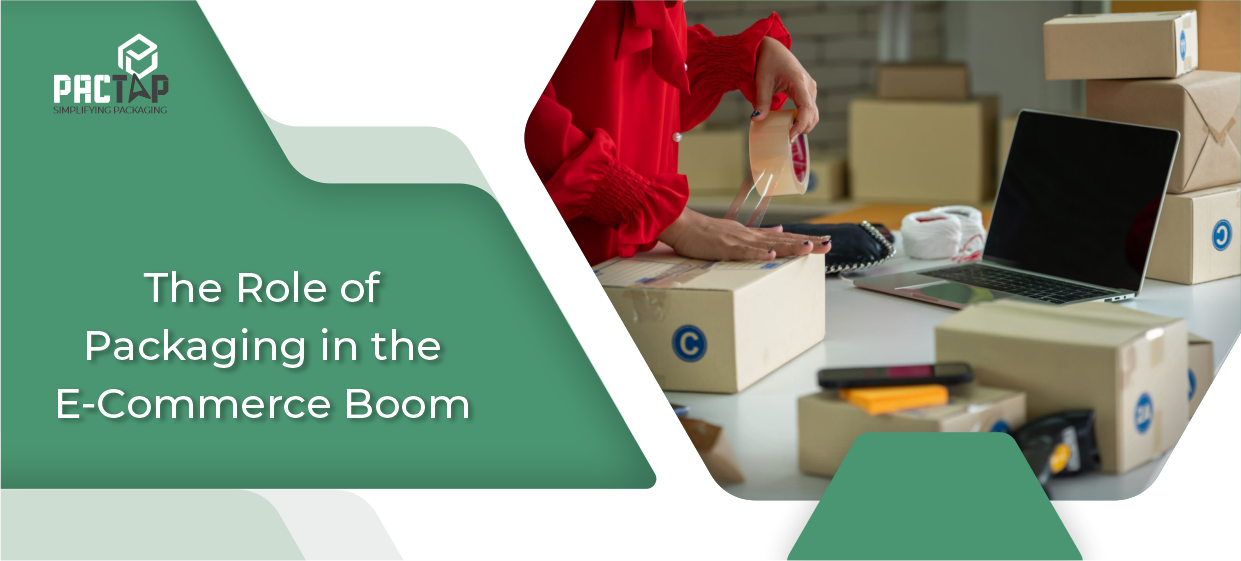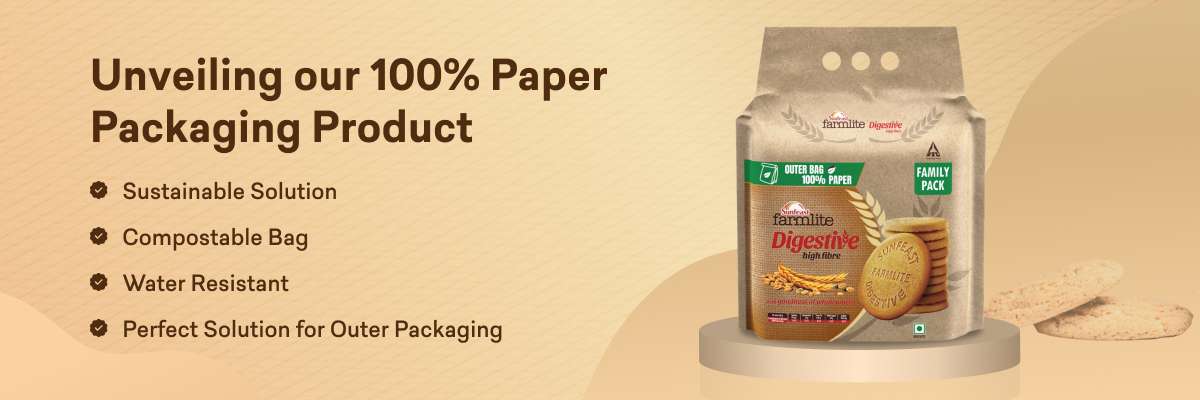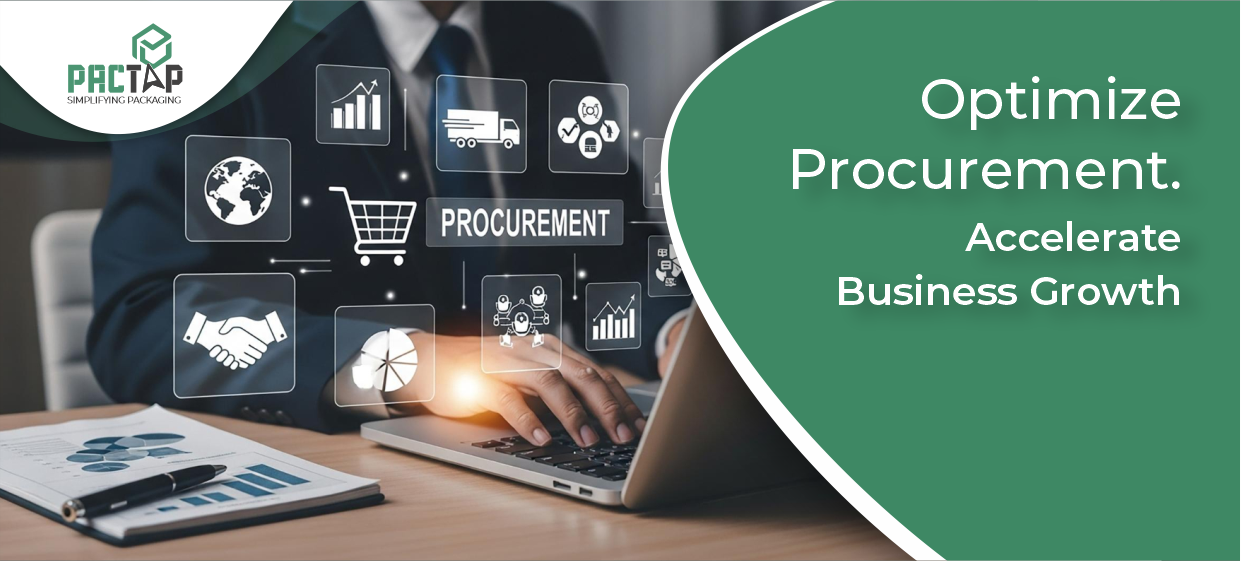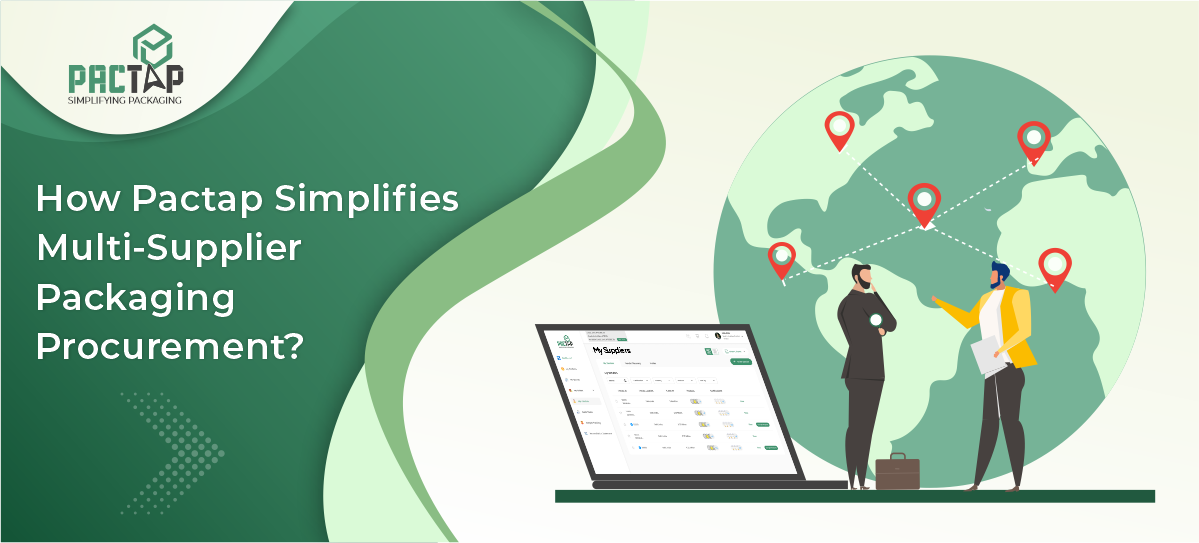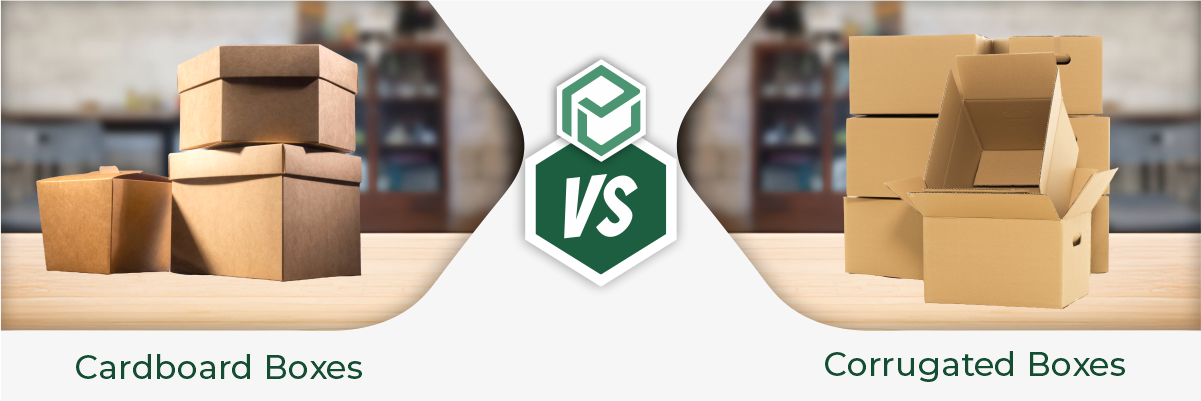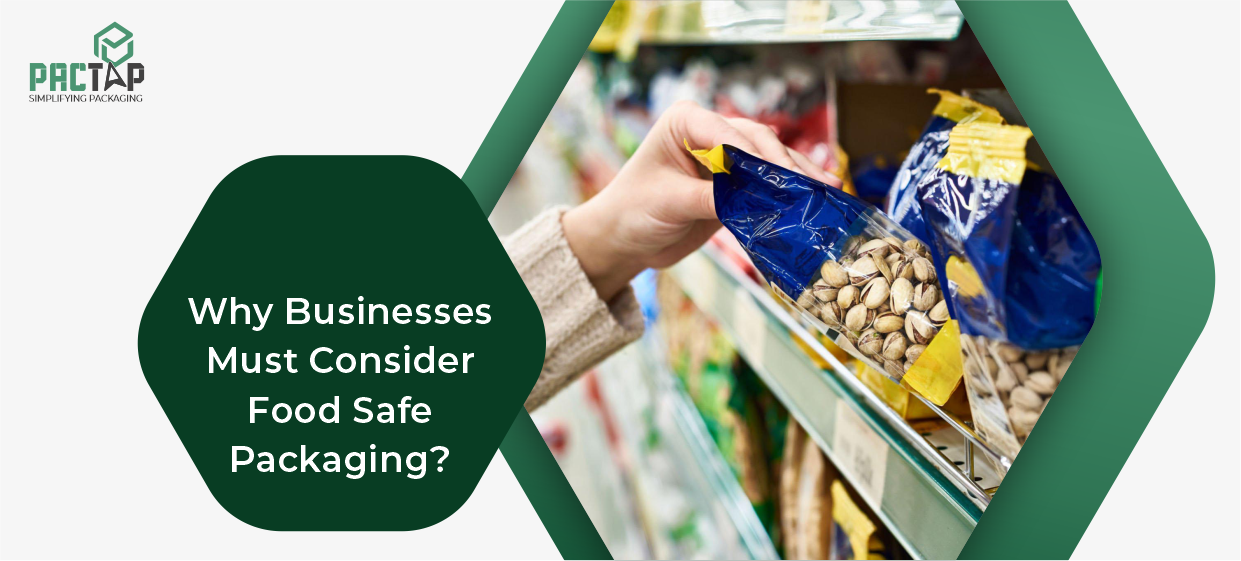The Packaging in the E-Commerce Boom sector has witnessed a seismic shift in recent years, propelled by technological advancements, evolving consumer behaviors, and global connectivity. This explosive growth has fundamentally reshaped the retail landscape, transforming the way consumers discover, purchase, and receive goods. The convenience of browsing a vast array of products from the comfort of one’s home, coupled with the accessibility of online platforms, has fueled an unprecedented surge in online shopping.
However, this remarkable expansion wouldn’t be possible without a sophisticated and adaptable packaging ecosystem that can seamlessly bridge the gap between virtual storefronts and physical delivery. Packaging in the E-Commerce Boom has evolved from a mere protective layer to a crucial strategic asset, playing a multifaceted role in ensuring products reach customers safely, efficiently, and in a manner that elevates the entire online shopping experience.
This article delves into the intricate and transformative role of packaging in the e-commerce revolution, meticulously exploring the key factors driving its importance, the innovative solutions shaping the future of online retail, and the profound impact it has on customer satisfaction and brand loyalty.
How Has the E-Commerce Boom Changed Consumer Expectations for Packaging?
The Packaging in the E-Commerce Boom has not only accelerated the pace of online shopping but has also fundamentally altered consumer expectations regarding packaging. Customers now demand a holistic and seamless experience that extends beyond the digital realm and into the physical delivery of their purchases. They expect more than just functional protection; they anticipate a curated and thoughtful interaction that reflects the brand’s values and enhances their overall satisfaction.
Damage-Free Delivery
With products traversing vast distances and encountering numerous handling points in complex logistics networks, consumers expect their items to arrive in pristine condition. Even minor damage can lead to dissatisfaction and returns, emphasizing the critical need for robust Packaging in the E-Commerce Boom that can withstand the rigors of transit.
Sustainability
Growing environmental awareness has spurred a significant demand for eco-friendly and minimal Packaging in the E-Commerce Boom. Consumers are increasingly conscious of the environmental footprint of their online purchases and prefer brands that prioritize sustainability by using recyclable, biodegradable, or compostable materials.
Convenience
In the fast-paced world of e-commerce, convenience is paramount. Customers appreciate packaging that is easy to open, resealable for returns or storage, and designed for hassle-free handling. This includes features like tear strips, perforated openings, and ergonomic designs that enhance usability.
Brand Experience
Packaging has evolved into a powerful tool for brand communication and engagement. Consumers now perceive packaging as an extension of the brand, offering an opportunity for personalized and memorable interactions. This includes custom-printed boxes, branded inserts, and personalized notes that create a unique unboxing experience.
Speed and Efficiency
With the expectation of rapid delivery, consumers value packaging solutions that streamline fulfillment and delivery processes. This includes optimized packaging sizes, automated packing systems, and efficient labeling that contribute to faster order processing and transit times.
What Packaging Features Are Essential for E-Commerce Success?
To meet these evolving consumer expectations and thrive in the competitive e-commerce landscape, packaging must incorporate several key features that address the unique challenges of online retail:
Durability and Protection
Packaging must be engineered to withstand the rigors of transit, protecting products from impacts, vibrations, compression, and environmental factors such as moisture and temperature fluctuations. This involves selecting appropriate materials, designing robust structures, and implementing protective cushioning.
Right-Sizing
Optimizing packaging size to closely match the product’s dimensions minimizes void space, reducing dimensional weight and shipping costs. This also contributes to sustainability by reducing material usage and waste. Automated packaging systems can play a crucial role in achieving right-sizing.
Easy Opening and Handling
User-friendly packaging reduces customer frustration and enhances satisfaction. This includes features like tear strips, perforated openings, and ergonomic designs that make it easy to open, handle, and repackage items.
Tamper-Evident Features
These features, such as seals, labels, and closures, ensure product integrity and build consumer trust by providing visible evidence of tampering or unauthorized access. This is particularly important for high-value or sensitive products.
Sustainable Materials
Eco-friendly packaging options, such as recycled cardboard, biodegradable films, and compostable cushioning materials, resonate with environmentally conscious consumers. This demonstrates a brand’s commitment to sustainability and enhances its reputation.
Branding and Personalization
Packaging provides a valuable opportunity to reinforce brand identity and create a memorable unboxing experience. This includes custom-printed boxes, branded inserts, personalized notes, and unique design elements that reflect the brand’s values and aesthetics.
Return-Friendly Design
Packaging that facilitates easy returns minimizes customer hassle and encourages repeat purchases. This includes reusable packaging, pre-paid return labels, and clear return instructions that simplify the return process.
How Does Packaging Optimization Reduce Shipping Costs in E-Commerce?
Shipping costs represent a significant expense for e-commerce businesses, impacting profitability and competitiveness. Packaging optimization can effectively reduce these costs through various strategies:
- Right-Sizing: Using packaging that closely matches the product’s dimensions minimizes void space, reducing dimensional weight, which is a key factor in calculating shipping costs. Automated packaging systems can optimize packaging size based on product dimensions, minimizing waste and reducing shipping expenses.
- Lightweight Materials: Switching to lighter packaging materials, such as corrugated cardboard, recycled plastics, or paper-based cushioning, reduces overall package weight, leading to lower shipping costs. Careful consideration of material strength and durability is essential to ensure adequate protection.
- Consolidation: Designing packaging that allows for the consolidation of multiple items into a single shipment reduces the number of packages and shipping costs. This can involve using modular packaging designs or creating custom inserts that secure multiple items within a single box.
- Automated Packaging Systems: Automated systems can optimize packaging size, material usage, and packing efficiency, reducing waste, labor costs, and shipping expenses. These systems can also improve accuracy and consistency, minimizing errors and delays.
- Negotiating Shipping Rates: Optimizing packaging can lead to lower shipping rates from carriers, as packages are more efficient to handle and transport. Carriers often offer discounts for packages that meet specific size and weight requirements.
How Does Sustainable Packaging Enhance the E-Commerce Customer Experience?
Consumers are increasingly concerned about the environmental impact of their purchases, and sustainable packaging has become a key differentiator in the e-commerce landscape. Sustainable packaging can enhance the customer experience in several ways:
Demonstrating Environmental Responsibility
Using eco-friendly packaging signals a brand’s commitment to sustainability, resonating with environmentally conscious consumers and fostering a positive brand image. This can lead to increased customer loyalty and advocacy.
Reducing Waste
Minimal and recyclable packaging reduces the amount of waste generated by online purchases, aligning with consumers’ desire to minimize their environmental footprint. This can include using recycled materials, biodegradable films, and compostable cushioning.
Enhancing Brand Image
Sustainable packaging can enhance a brand’s image and reputation, attracting and retaining customers who prioritize environmental responsibility. This can create a competitive advantage and differentiate the brand from competitors.
Providing a Positive Unboxing Experience
Eco-friendly packaging can create a unique and memorable unboxing experience, reinforcing the brand’s commitment to sustainability. This can include using natural materials, minimalist designs, and informative inserts about the packaging’s sustainability credentials.
Meeting Consumer Demands
Many consumers actively seek out brands that prioritize sustainability, making it a competitive advantage. By offering sustainable packaging options, businesses can meet consumer demands and attract a growing segment of environmentally conscious shoppers.
How Does Packaging Design Improve the Unboxing Experience in E-Commerce?
The unboxing experience has become a crucial touchpoint in the e-commerce customer journey, influencing customer satisfaction, brand perception, and social media engagement. Packaging design plays a pivotal role in creating a memorable and engaging unboxing experience:
Creating a Sense of Anticipation
Visually appealing packaging, such as custom-printed boxes, tissue paper, and branded inserts, builds excitement and anticipation before the product is even revealed. This can create a sense of exclusivity and elevate the perceived value of the purchase.
Providing a Personalized Touch
Including personalized notes, samples, or gifts creates a memorable and engaging experience, fostering a stronger connection between the customer and the brand. This can include handwritten notes, personalized recommendations, or samples of complementary products.
Reinforcing Brand Identity
Consistent branding elements, such as logos, colors, fonts, and design aesthetics, reinforce brand recognition and loyalty. This creates a cohesive brand experience and strengthens brand recall.
Enhancing Product Presentation
Thoughtfully designed packaging enhances the perceived value of the product, creating a premium and luxurious feel. This can include using high-quality materials, intricate designs, and creative packaging structures.
Facilitating Social Sharing
Unique and shareable packaging encourages customers to share their unboxing experience on social media platforms, generating organic brand awareness and word-of-mouth marketing. This can include packaging with eye-catching designs, interactive elements, or shareable messages.
How Does Packaging Technology Protect Fragile Items During E-Commerce Shipping?
Protecting fragile items during transit is a significant challenge for e-commerce businesses, requiring specialized packaging solutions that can withstand the rigors of shipping. Packaging technology offers several effective solutions:
Cushioning Materials
Air pillows, foam inserts, and bubble wrap provide cushioning and shock absorption, protecting fragile items from impacts and vibrations. These materials can be customized to fit specific product shapes and sizes, ensuring optimal protection.
Molded Pulp Inserts
These inserts are custom-designed to cradle and protect specific products, providing superior protection against impacts and vibrations. Molded pulp is a sustainable material made from recycled paper, offering both protection and environmental benefits.
Suspension Packaging
This type of packaging suspends the product within the box, minimizing contact with the outer walls and reducing the risk of damage from impacts and vibrations. This is particularly effective for delicate electronics and glassware.
Corrugated Inserts
These inserts provide structural support and prevent items from shifting during transit, minimizing the risk of damage from collisions and impacts. They can be designed to create compartments and dividers within the box, securing multiple items.
Protective Films and Coatings
These films and coatings provide a barrier against scratches, abrasions, and other types of damage, protecting the product’s surface from cosmetic imperfections. They can also provide anti-static properties, protecting sensitive electronics from electrostatic discharge.
How Does Packaging Facilitate Easy Returns in E-Commerce?
Easy returns are essential for customer satisfaction and loyalty in e-commerce, and packaging plays a crucial role in simplifying the return process.
- Including Pre-Paid Return Labels: Providing pre-paid return labels within the original package simplifies the return process for customers, eliminating the need to print labels or visit a shipping carrier.
- Designing Reusable Packaging: Packaging that can be easily resealed and reused for returns minimizes customer hassle and reduces waste. This can include boxes with resealable flaps, tear strips, or integrated return labels.
- Providing Clear Return Instructions: Including clear and concise return instructions within the package reduces confusion and frustration, ensuring a smooth and efficient return process. This can include step-by-step instructions, diagrams, and QR codes linking to online resources.
- Offering Return-Friendly Packaging Design: Designing packaging that is easy to repack and reseal simplifies the return process, minimizing customer effort. This can include packaging with pre-scored flaps, self-adhesive closures, and integrated return labels.
- QR Codes: Providing QR codes within the package or on the return label allows customers to initiate the return process via a mobile device, streamlining the process and providing real-time tracking information.
How Does Packaging Contribute to Brand Building in E-Commerce?
Packaging is a powerful tool for brand building in e-commerce, offering a tangible touchpoint for brand communication and engagement.
Reinforce Brand Identity
Consistent branding elements, such as logos, colors, fonts, and design aesthetics, reinforce brand recognition and loyalty. This creates a cohesive brand experience and strengthens brand recall.
Create a Memorable Unboxing Experience
Unique and shareable packaging creates a lasting impression and enhances brand recall, fostering a stronger connection between the customer and the brand. This can include custom-printed boxes, branded inserts, personalized notes, and interactive elements.
Communicate Brand Values
Packaging can communicate a brand’s values, such as sustainability, quality, and innovation, enhancing brand perception and attracting like-minded customers. This can include using eco-friendly materials, minimalist designs, and informative inserts about the brand’s sustainability initiatives.
Build Customer Loyalty
Personalized and engaging packaging experiences foster customer loyalty and repeat purchases, creating a sense of exclusivity and appreciation. This can include personalized notes, samples, and gifts that enhance the customer experience.
Drive Social Media Engagement
Shareable packaging encourages customers to share their unboxing experience on social media platforms, generating organic brand awareness and word-of-mouth marketing. This can include packaging with eye-catching designs, interactive elements, and shareable messages.
What Are the Future Trends in E-Commerce Packaging?
The future of e-commerce packaging will be shaped by several key trends, driven by technological advancements, evolving consumer behaviors, and environmental concerns.
Increased Focus on Sustainability
Eco-friendly packaging materials and designs will become increasingly prevalent, driven by consumer demand and regulatory pressures. This includes using recycled and biodegradable materials, minimizing packaging size, and implementing reusable packaging options.
Smart Packaging
Packaging incorporating sensors, RFID tags, and other technologies will provide real-time information about product conditions, enhance supply chain visibility, and improve customer experience. This can include temperature sensors, humidity sensors, and tracking devices.
Personalized Packaging
Customization and personalization will become more common, creating unique and engaging customer experiences. This can include custom-printed boxes, personalized notes, and interactive packaging elements.
Automation and Robotics
Automated packaging systems and robotics will streamline fulfillment and delivery processes, reducing labor costs and improving efficiency. This can include automated packing machines, robotic arms, and automated labeling systems.
Circular Economy Solutions
Packaging designed for reuse, recycling, and composting will become more widespread, contributing to a circular economy and minimizing waste. This can include reusable packaging, returnable containers, and compostable materials.
3D Printed Packaging
On-demand 3D printed packaging will allow for highly customized packaging solutions, meeting the specific needs of individual products and customers. This can include custom-designed inserts, protective cushioning, and unique packaging structures.
How to Optimize E-Commerce Packaging?
- Analyze Product Characteristics: Conduct a thorough analysis of the product’s fragility, size, weight, and other relevant characteristics to determine the appropriate packaging requirements.
- Evaluate Packaging Options: Research and evaluate different Packaging in the E-Commerce Boom materials and designs that meet the product’s needs, considering factors such as cost, performance, sustainability, and customer experience.
- Conduct Testing and Validation: Rigorously test packaging solutions to ensure they provide adequate protection and meet performance requirements, including drop tests, vibration tests, and environmental tests.
- Optimize Packaging Size and Material Usage: Right-size packaging and use lightweight materials to reduce shipping costs and waste, while maintaining product protection.
- Incorporate Branding and Personalization: Design packaging that reinforces brand identity and creates a memorable unboxing experience, enhancing customer engagement and loyalty.
- Implement Sustainable Packaging Practices: Use eco-friendly materials and designs to minimize environmental impact, demonstrating a commitment to sustainability and attracting environmentally conscious customers.
- Facilitate Easy Returns: Design packaging that simplifies the return process for customers, minimizing hassle and encouraging repeat purchases.
- Continuously Monitor and Improve: Track packaging performance, gather customer feedback, and stay updated on industry trends to identify areas for improvement and optimize packaging strategies.
Conclusion
Packaging has transcended its traditional role as a mere protective layer, evolving into a strategic asset that significantly impacts customer satisfaction, brand perception, and operational efficiency in the e-commerce landscape. The Packaging in the E-Commerce Boom has amplified the importance of packaging, demanding solutions that are not only protective and efficient but also sustainable and engaging.
By understanding the evolving needs of consumers and leveraging innovative packaging technologies, businesses can create a competitive advantage in the dynamic world of online retail. From right-sizing and sustainable materials to personalized unboxing experiences and return-friendly designs, every aspect of packaging plays a crucial role in shaping the e-commerce customer journey.
As technology advances and consumer expectations evolve, the role of packaging in the e-commerce boom will only become more critical, driving innovation and shaping the future of online shopping. By prioritizing packaging optimization, businesses can navigate the complexities of e-commerce, enhance customer loyalty, and achieve sustainable growth in this rapidly expanding market.
